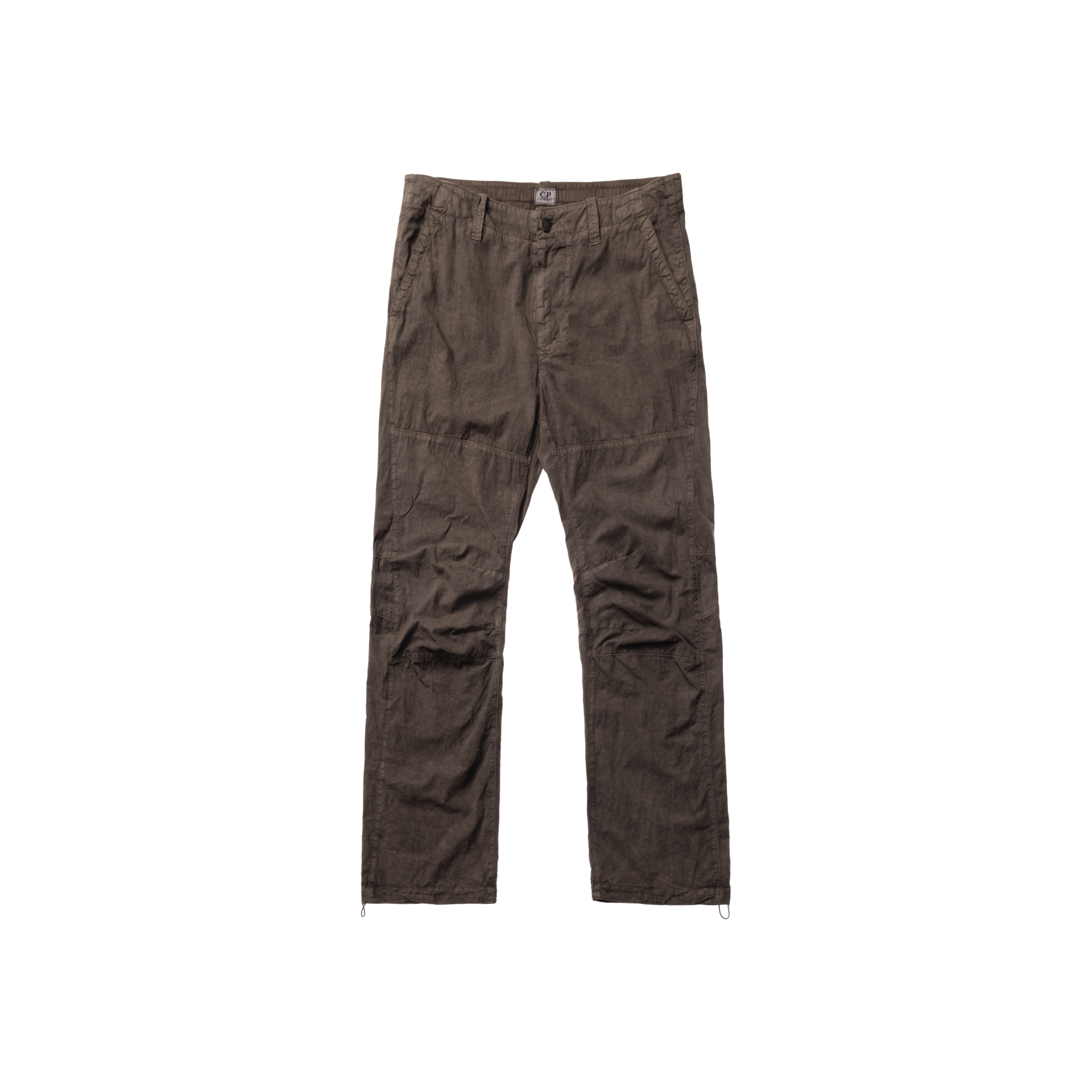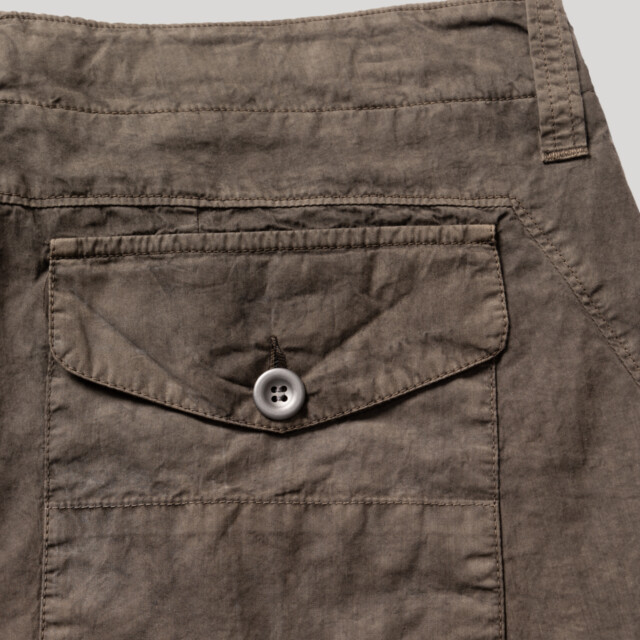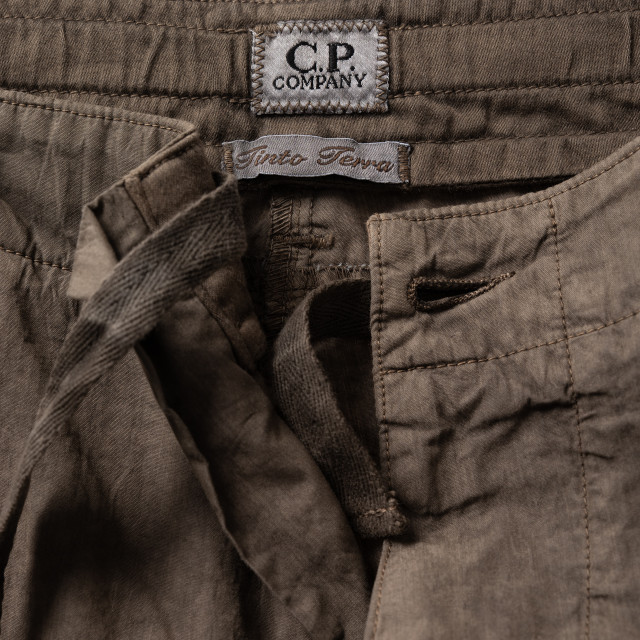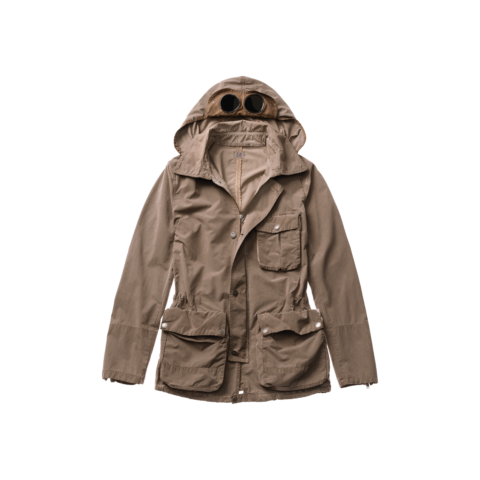ARCHCP0072
TINTO TERRA 50 FILI PANTS
A Tinto Terra dyed pants from FW007 C.P. Company collection.

ARCHCP0072
TINTO TERRA 50 FILI PANTS
A Tinto Terra dyed pants from FW007 C.P. Company collection.
Tinto Terra is a unique natural colour garment dyeing technique developed by C.P. Company in 2005 and first presented in the Spring-Summer 2006 collection. The impetus for the development of the technique came from its then principal garment dyeing partner, Tintoria Emiliana, who presented the company with the possibility of dyeing with natural European, clay-derived, colours.
In the words of current Vice President of Product & Design Stefano Polato, the colours were nice but when used on natural fabrics – the most used fabrics in C.P. collections at the time – they tended to look “too casual and similar to commercial denim washes”. Experiments on synthetic fabrics, in particular polyester, were more interesting and unusual and had a strangely “industrial” flavour. “On polyester the dyes gave effects reminiscent of factories that had been abandoned and ravaged by time. On cotton on the other hand they evoked the atmosphere of a collapsing farmhouse!” Says Polato. By dyeing a Japanese polyester fabric at 60°C with these natural colours (rather than the 130°C required by polyester for full absorption of colour), C.P. Company was able to createa surface colour and effect which communicated both the derivation of the dye (natu- ral clays) as well as creating the aforementioned “post-industrial” atmosphere.
In the seasons following this first development of the technique was further enhanced through the addition of an initial “basic” garment dyeing process. First the garment was dyed with a base colour such as beige or brown, using regular colours and dyeing techniques for uniform absorption by the fiber. Subsequently the jacket was again garment dyed at a low temperature with natural colours, dirtying the base colour and creating complex, subtle, tone on tone effects.
In later seasons, Pungetti also began to experiment the now iconic treatment on natural fabrics such as linen and leather.




